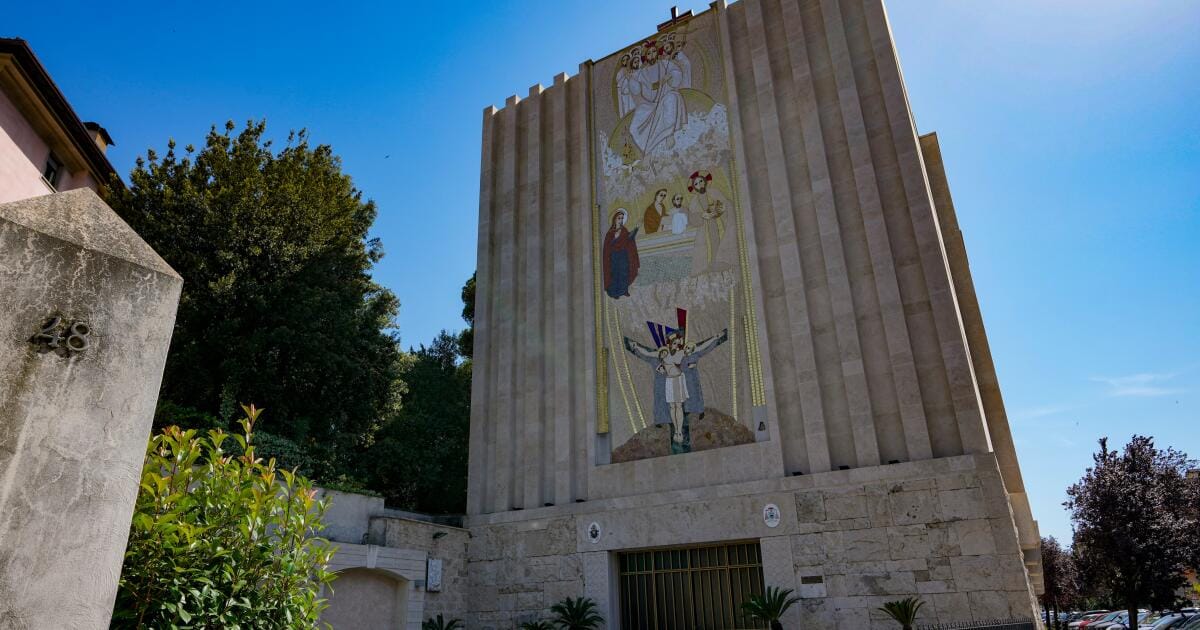Vatican will return dozens of artifacts to Indigenous groups in Canada as reconciliation gesture
VATICAN CITY — The Vatican is expected to soon announce that it will return a few dozen artifacts to Indigenous communities in Canada as part of its reckoning with the Catholic Church’s troubled role in helping suppress Indigenous culture in the Americas, officials said Wednesday.
The items, including an Inuit kayak, are part of the Vatican Museum’s ethnographic collection, known as the Anima Mundi museum. The collection has been a source of controversy for the Vatican amid the broader museum debate over the restitution of cultural goods taken from Indigenous peoples during colonial periods.
Negotiations on returning the Vatican items accelerated after Pope Francis in 2022 met with Indigenous leaders who had traveled to the Vatican to receive his apology for the church’s role in running Canada’s disastrous residential schools. During their visit, they were shown some objects in the collection, including wampum belts, war clubs and masks, and asked for them to be returned.
Francis later said he was in favor of returning the items and others in the Vatican collection on a case-by-case basis, saying: “In the case where you can return things, where it’s necessary to make a gesture, better to do it.”
The Canadian Conference of Catholic Bishops said Wednesday it has been working with Indigenous groups on returning the items to their “originating communities.” It said it expected the Holy See to announce the return. Vatican and Canadian officials said they expected an announcement in the coming weeks, and that the items could arrive on Canadian soil before the end of the year.
The Globe and Mail newspaper first reported on the progress in the restitution negotiations.
Doubt cast on whether the items were freely given
Most of the items in the Vatican collection were sent to Rome by Catholic missionaries for a 1925 exhibition in the Vatican gardens that was a highlight of that year’s Holy Year.
The Vatican insists the items were “gifts” to Pope Pius XI, who wanted to celebrate the church’s global reach, its missionaries and the lives of the Indigenous peoples they evangelized.
But historians, Indigenous groups and experts have long questioned whether the items could really have been offered freely, given the power imbalances at play in Catholic missions at the time. In those years, Catholic religious orders were helping to enforce the Canadian government’s forced assimilation policy of eliminating Indigenous traditions, which Canada’s Truth and Reconciliation Commission has called “cultural genocide.”
Part of that policy included confiscating items used in Indigenous spiritual and traditional rituals, such as the 1885 potlatch ban that prohibited the integral First Nations ceremony. Those confiscated items ended up in museums in Canada, the U.S. and Europe, as well as private collections.
The return of the items in the Vatican collection will follow the “church-to-church” model the Holy See used in 2023, when it gave its Parthenon Marbles to the Orthodox Christian Church in Greece. The three fragments were described by the Vatican as a “donation” to the Orthodox church, not a state-to-state repatriation to the Greek government.
In this case, the Vatican is expected to hand over the items to the Canadian bishops conference, with the explicit understanding that the ultimate keepers will be the Indigenous communities, a Canadian official said Wednesday, speaking on condition of anonymity because the negotiations are not concluded.
What happens after the items are returned
The items, accompanied by whatever provenance information the Vatican has, will be taken first to the Canadian Museum of History in Gatineau, Quebec. There, experts and Indigenous groups will try to identify where the items originated, down to the specific community, and what should be done with them, the official said.
The official declined to say how many items were under negotiation or who decided what would be returned, but said the total numbered “a few dozen.” The aim is to get the items back this year, the official said, noting the 2025 Jubilee which celebrates hope but is also a time for repentance.
This year’s Jubilee comes on the centenary of the 1925 Holy Year and missionary exhibit, which is now so controversial that its 100th anniversary has been virtually ignored by the Vatican, which celebrates a lot of anniversaries.
The Assembly of First Nations said some logistical issues need to be finalized before the objects can be returned, including establishing protocols.
“For First Nations, these items are not artifacts. They are living, sacred pieces of our cultures and ceremonies and must be treated as the invaluable objects that they are,” National Chief Cindy Woodhouse Nepinak told Canadian Press.
Gloria Bell, associate professor of art history at McGill University who has conducted extensive research on the 1925 exhibit, said the items were acquired during an era of “Catholic Imperialism” by a pope who “praised missionaries and their genocidal labors in Indigenous communities as ‘heroes of the faith.’”
“This planned return marks a significant shift in the recognition of Indigenous sovereignty and perhaps the beginning of healing,” said Bell, who is of Metis ancestry and wrote about the 1925 exhibit in “Eternal Sovereigns: Indigenous Artists, Activists, and Travelers Reframing Rome.”
Winfield writes for the Associated Press.

